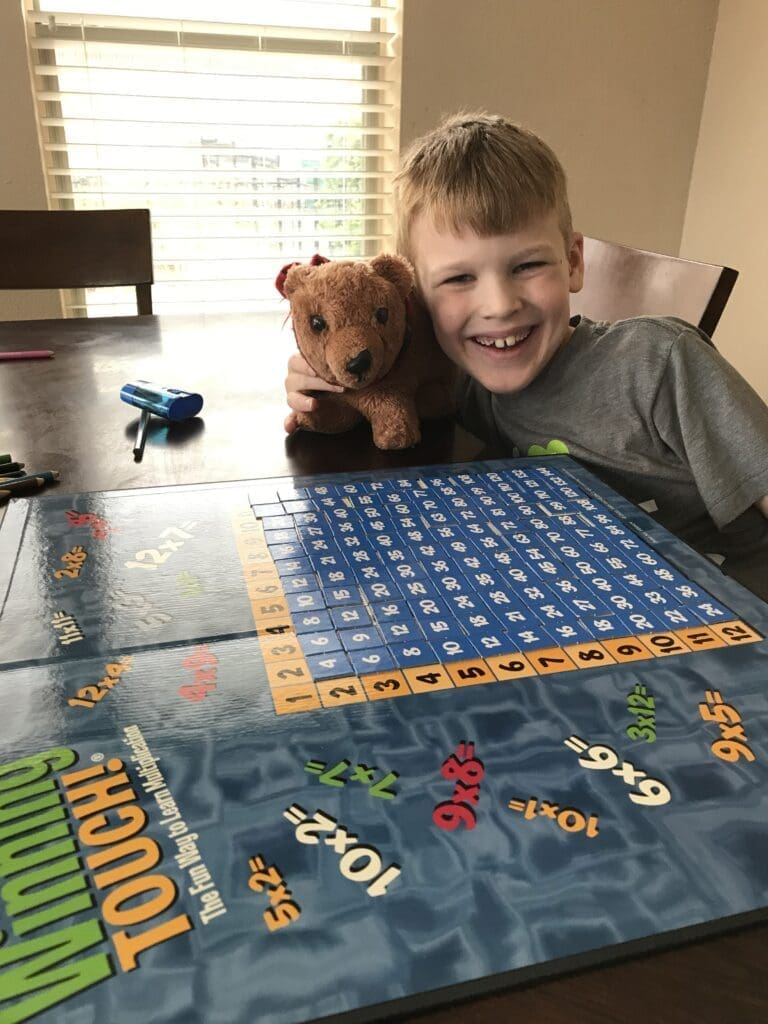Not only do I allow elementary students to have their stuffed animals in math tutoring, but I encourage it if the child asks.
I occasionally even have a real animal participating 🙂

I ask the child about the animal and even ham it up talking to the animal. This is why.
- Having a security object with them helps many kids feel more confident. Too many kids associate math with negative experiences, frustration and anxiety. As I mentioned in a previous post, a lot of what I do is actually math therapy! Fix It Maths, one of my favorite accounts to follow on Instagram, told me this:
“I talk to toys too! If a child has brought a toy, I think there’s generally a reason. One of my learners often asks his toy for the answer, then he relays what the toy has whispered to him. This seems to create a safe space for him to really process the problem because he’ll generally give good reasoning as well as the answer.”
Fix It Maths via Instagram comment

In her guest post Motivating Math Students, Kristin Powers of Math Superpowers mentioned that it is very important to keep math class “open, relaxed, and welcoming.” Having a stuffed animal helps many children feel more relaxed.
- Letting a child share something important to them helps build relationship. A child’s attitude toward math is the most important factor in building math success. Anything I can do to make math time “the highlight of the child’s week” (as parents have said to me more than once) I will do, and that starts with us having a positive relationship. The child sharing something they love speeds up this process.

- Finally, when a stuffed animal “plays” a game with us, a child thinks it is so fun but what is really happening is that the child is getting double math practice as he takes a turn for his toy. In addition, I choose fun games that students ask their parents to purchase, so the kids end up playing them with their animals even when I’m not there. (I can’t tell you how many texts I get from parents amazed their child is asking for math games!) Practice is the way to build math skills, and when a child WANTS to do it, it’s a win win situation.




